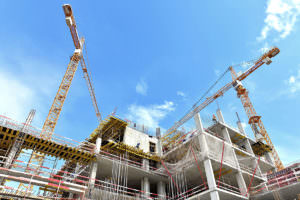
In a recent Denver construction defect case, an issue was whether a building’s classification under its original zoning designation as residential, or its later-modified designation as a mixed-use, should be considered in establishing available damages. Taking a common-sense approach, the Court held that the present and intended use of the building was determinative of its classification under CDARA.
The building at issue had been re-zoned as a mixed-use building – both residential and commercial. During construction, the building collapsed as joists were being removed from a brick wall. The developers sought damages for the diminution in value of the property as a result of the collapse, the anticipated damages associated with the loss of use of the property, lost rent due to the prospective tenant cancelling its lease, and various other damages allegedly caused by the collapse.
The Defendant challenged the availability of the loss of use and lost profits damages under CDARA’s definition of “actual damages.” In a case of first impression under Colorado law, Defendant argued the developers were not entitled to those damages regardless of the original zoning classification of the building because the building was “commercial” in nature at the time of the collapse. Relying heavily on the language of CDARA, and the ideals CDARA was intended to promote, the Denver District Court agreed with Defendant, and unequivocally denied the developers any damages not explicitly available for a commercial building under CDARA.
The Plaintiff argued that because the property was zoned for partial residential use, the fact that it was given a variance for nonconforming use, and was being renovated to accommodate a restaurant, was not determinative of whether the Property should be classified as a commercial space under CDARA. Plaintiff also argued that CDARA should not be applied differently to commercial and residential properties and that it should not limit the damages for loss of use, including lost rent, because those damages constitute “general damages.”
The Court concluded that principles of statutory construction and common sense dictated that the word “zoning” in CDARA’s definition of “commercial property” refers to the zoning at the time of the alleged construction negligence, including any then-existing variances. The Court held that, “the actual status and intended use of the property with the variance, rather than the original zoning status, should control.”
The Court’s ruling has implications for all construction projects in which the developer seeks a zoning variance or a change of zoning classification, but especially in cases where the property is being converted between residential and commercial uses. Construction attorneys should be mindful that a plaintiff’s actual damages under CDARA may be limited if a variance is granted to convert the property from residential to commercial use. On the other hand, the Court’s analysis in this case may be applied to the opposite situation (a change from commercial to residential use) to argue that the full range of damages available to residential homeowners should be awarded. In all cases, the Court made it clear that the actual status and intended use of the property should control given the purpose of CDARA and based on a common-sense application of the law.
Read the full article in an upcoming issue of The Colorado Lawyer.
